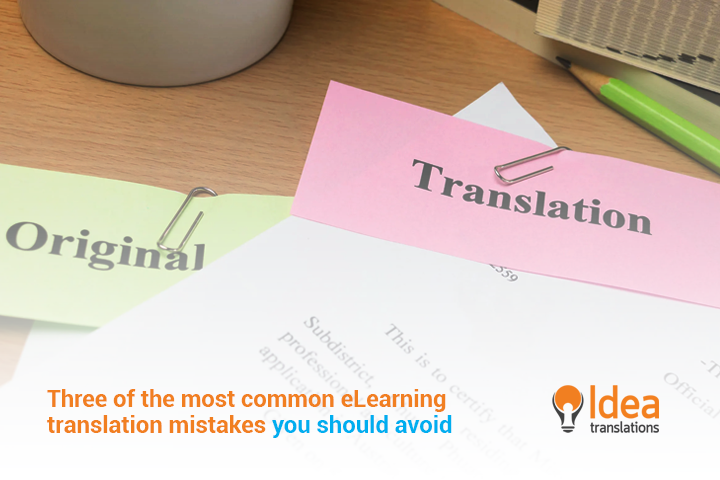
Three of the most common e-Learning translation mistakes you should avoid
When working with clients who need their training courses in multiple languages, it is difficult to educate them on the requirements, as they might think it is as simple as translating the content, and publishing it. The process couldn’t be further from that.
It is critical to understand the desired outcome and estimate a reasonable return on the customers’ translation investment in order to make eLearning translation a success. In this post we’ll share some of the most common mistakes made when translating a course and how to avoid them.
eLearning courses are interactive by nature which create challenges during the translation process. However, the task can be less stressful if you focus on organization, and a clear workflow between translators, designers, programmers, testers and the final user.
1. Work on the absolute final version.
If you expect to keep adding information, slides, or animations to the original course, wait before you move forward with any translation. Before thinking about localizing the eLearning course, make sure you are happy with the final version, and that you don’t intend to make changes for some time. The translation of an eLearning course is a multiple step process. Any changes in the middle of the process will undoubtedly cause delays, affect previously completed steps, and certainly increase work and cost. Don’t go straight into translation without taking the time to understand your audience.
2. Assess the audience properly.
If you want your learning audience to achieve real learning goals, you need to know what those goals and objectives are, and how your course serves that purpose. Learn as much as possible about your audience cultural background, and which approach will fit them best. Utilize surveys, focus groups and ask for leaders and users for their time and input beforehand.
3. Not leaving enough space for translated text.
Some languages take up more space, and others become condensed; you’ll want to choose a layout that is flexible and can accommodate any changes in text length. Avoid a formatting nightmare. There are some eLearning tools that let you easily adjust the size of text at a global level.
Some programs like Articulate allow you to create a project for each of your target languages and export a file that can be sent to translators, which you can then import back again into the right target language. However, some tools are not as simple to use and require extensive design or video sync with voiceover.
Make sure you choose a suitable eLearning authoring tool that provides you with flexible solutions for your multilanguage courses.
As we meet a post-pandemic globalization era, more organizations are leveraging online training to increase productivity and gain entry to new markets. Contact us to learn how we have helped companies like Panera Bread, L’Oréal, IADB, Brouwer Labs, American Airlines and others.



